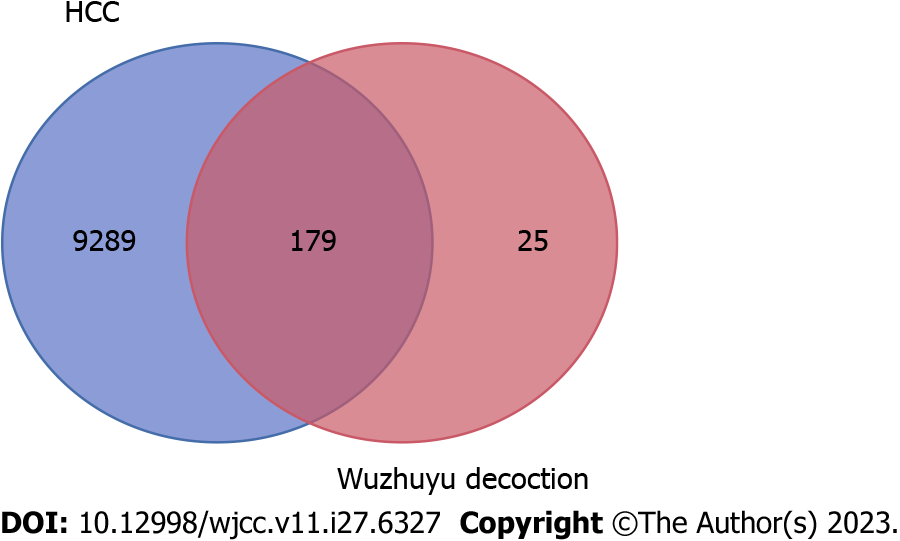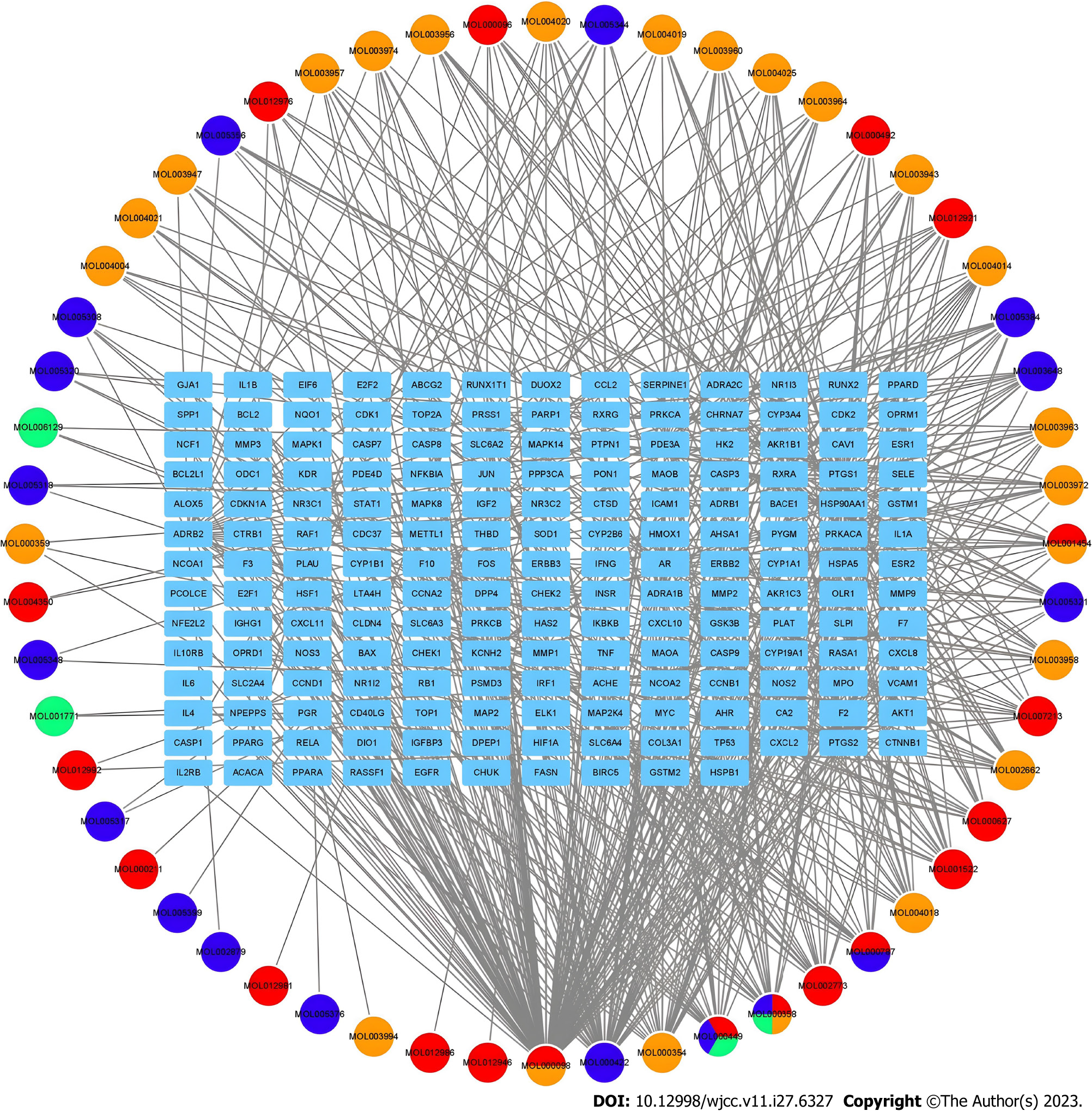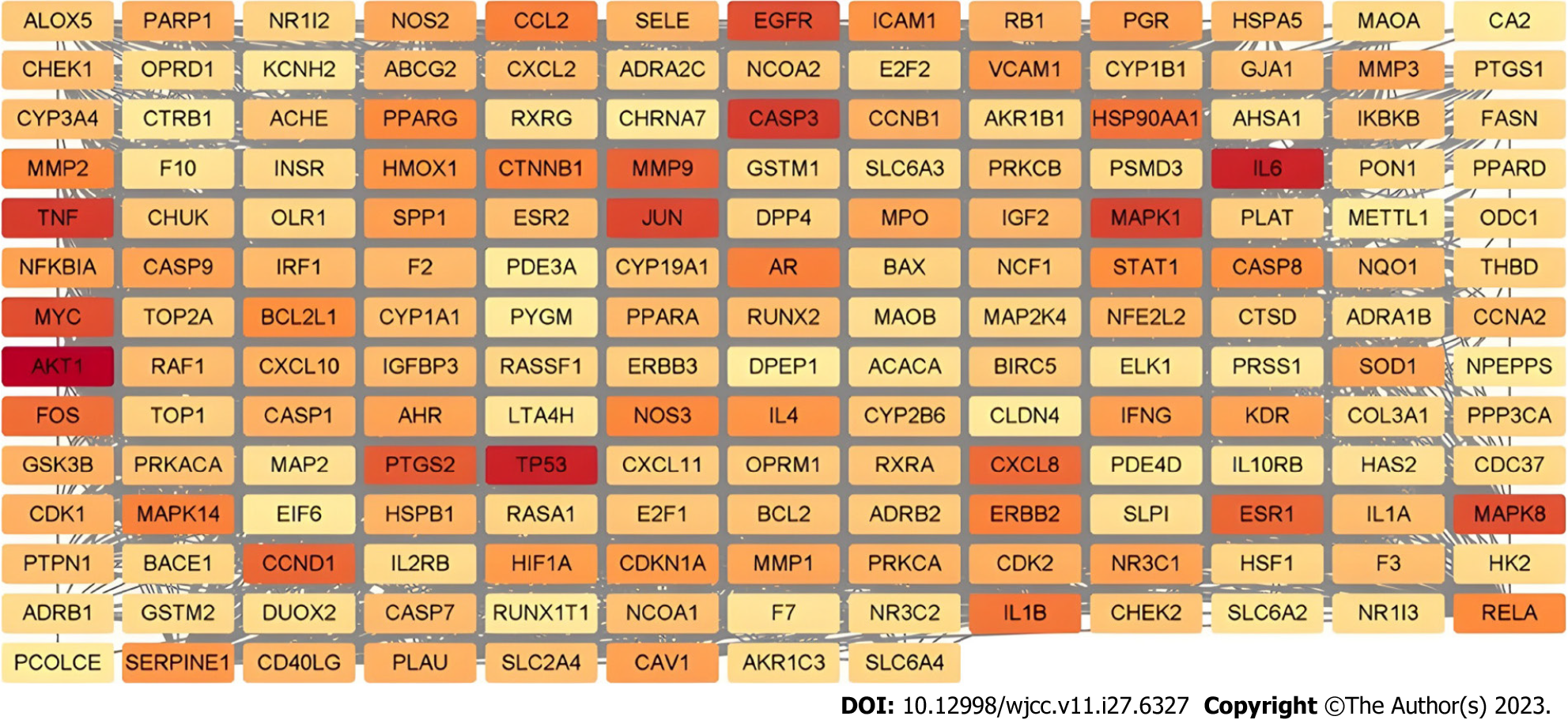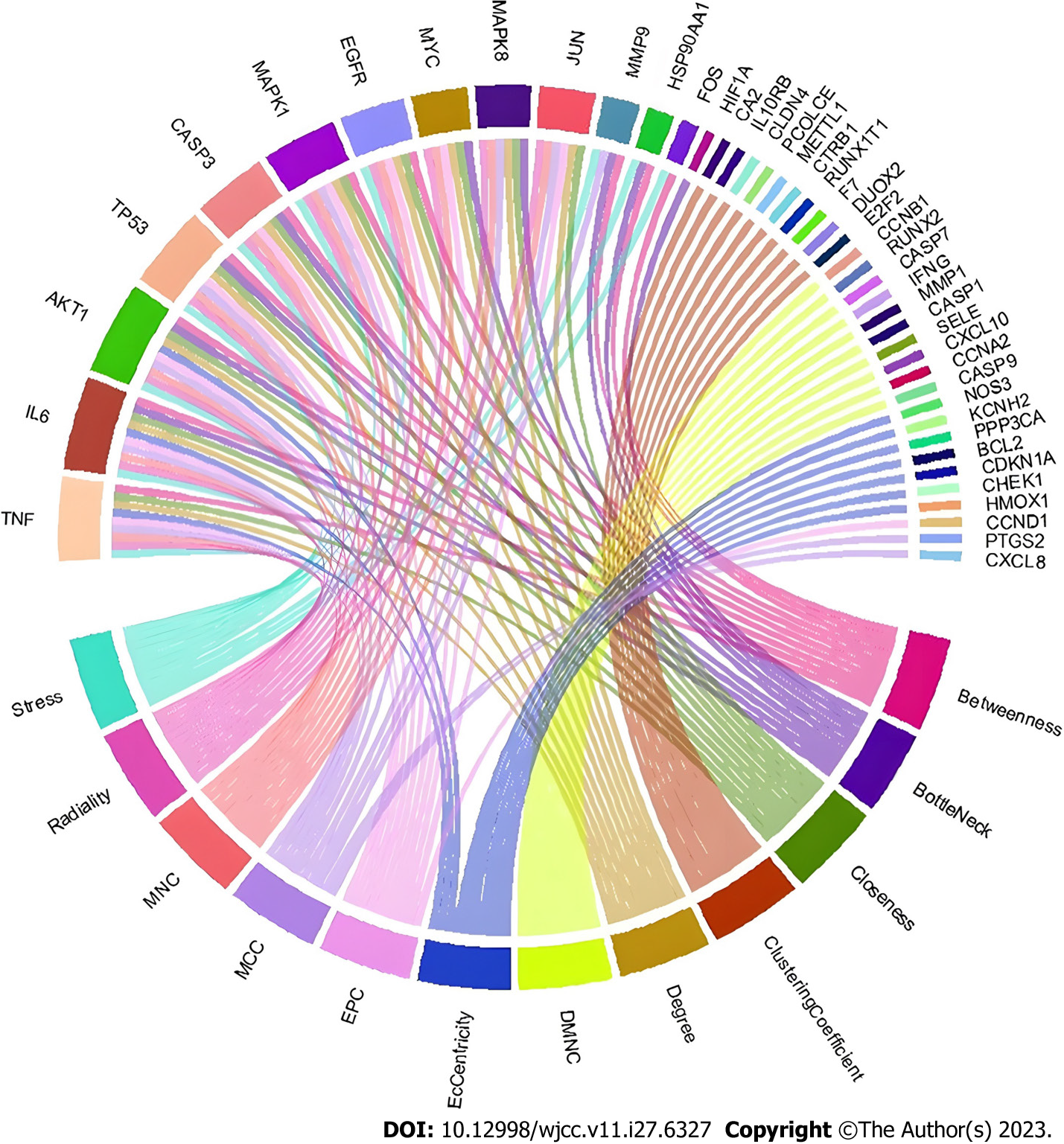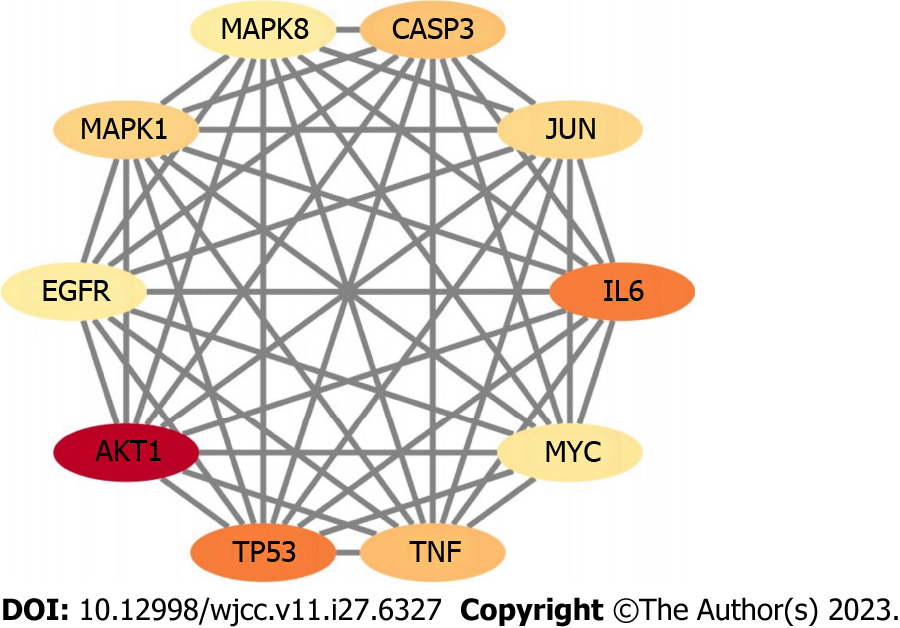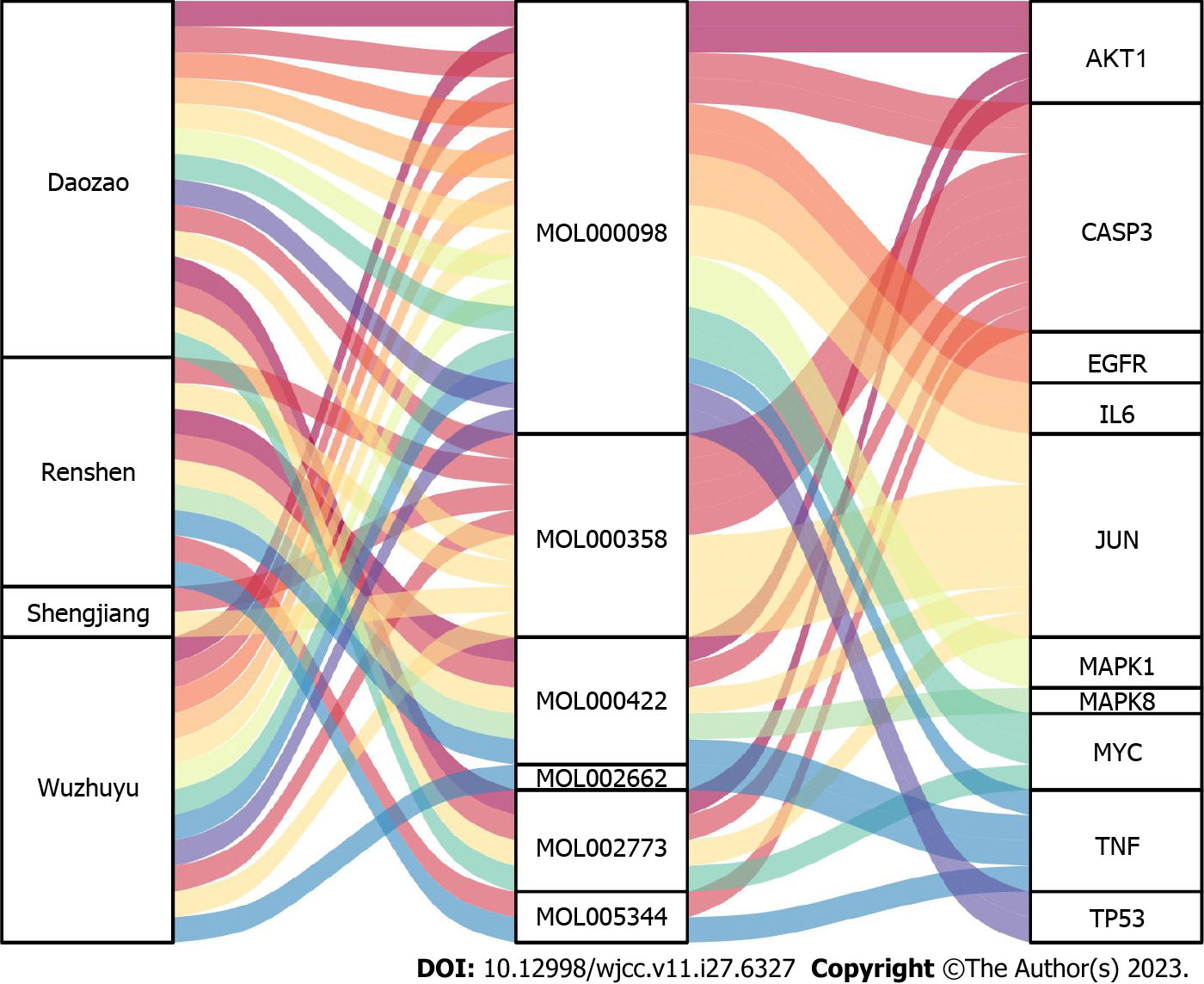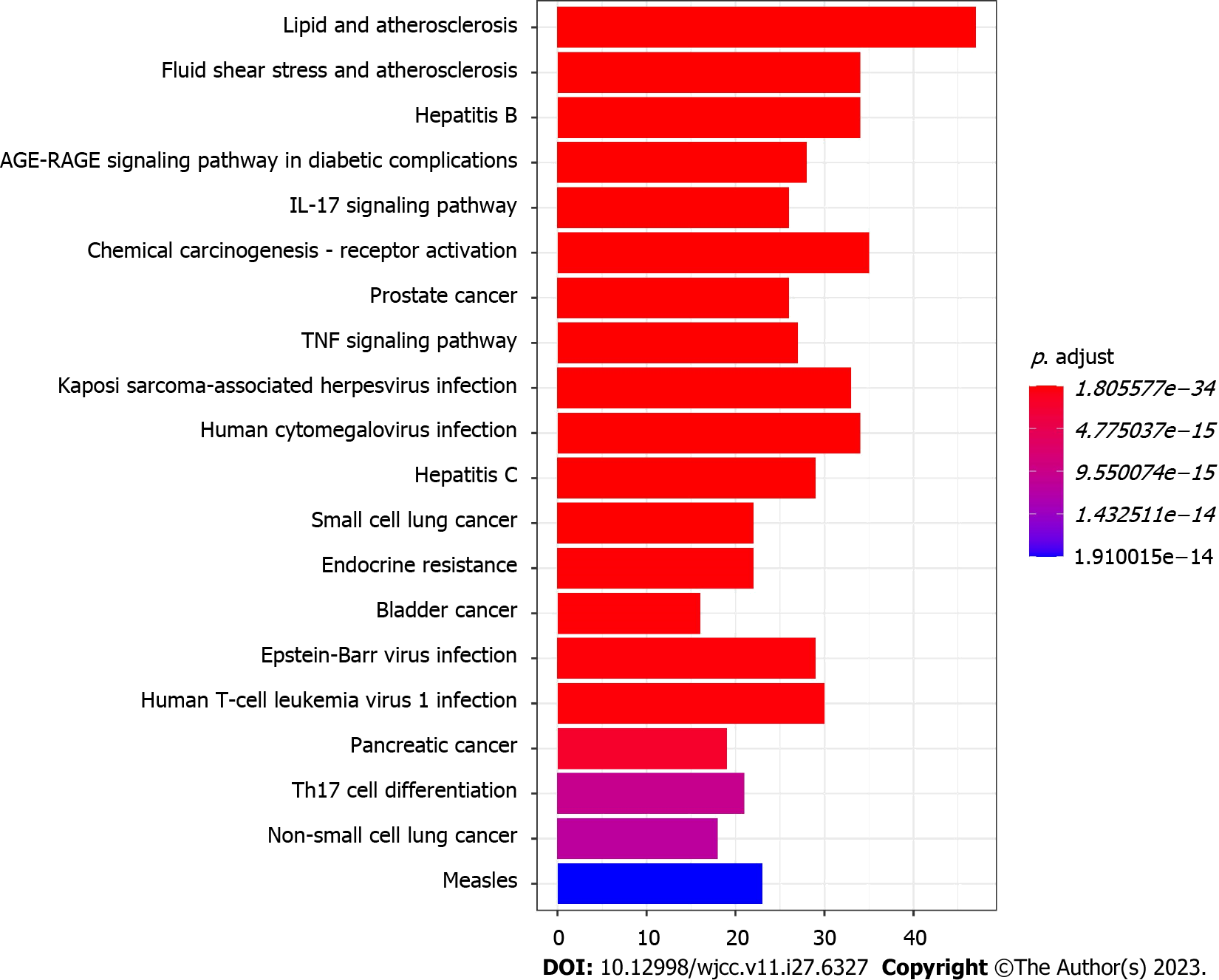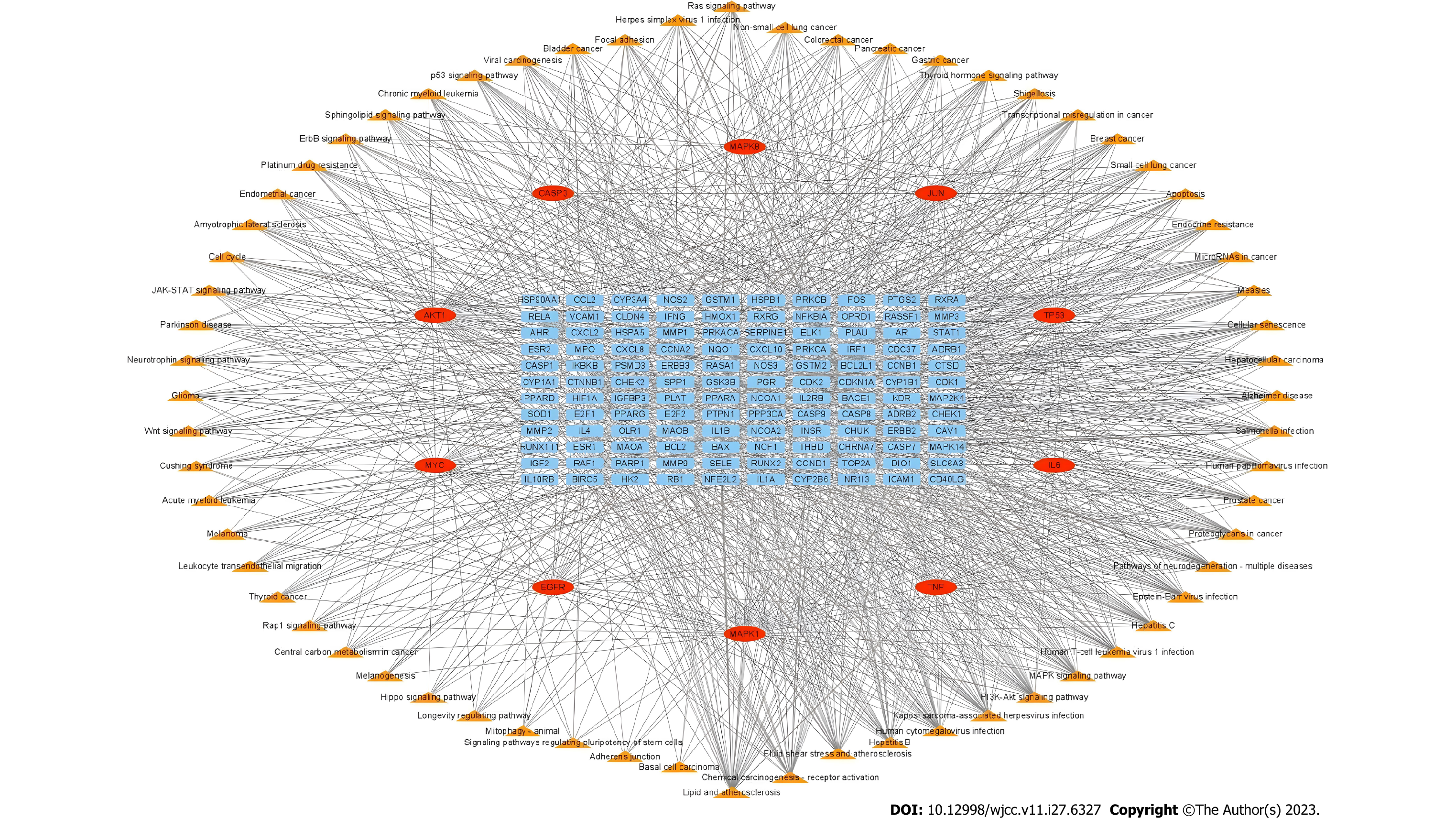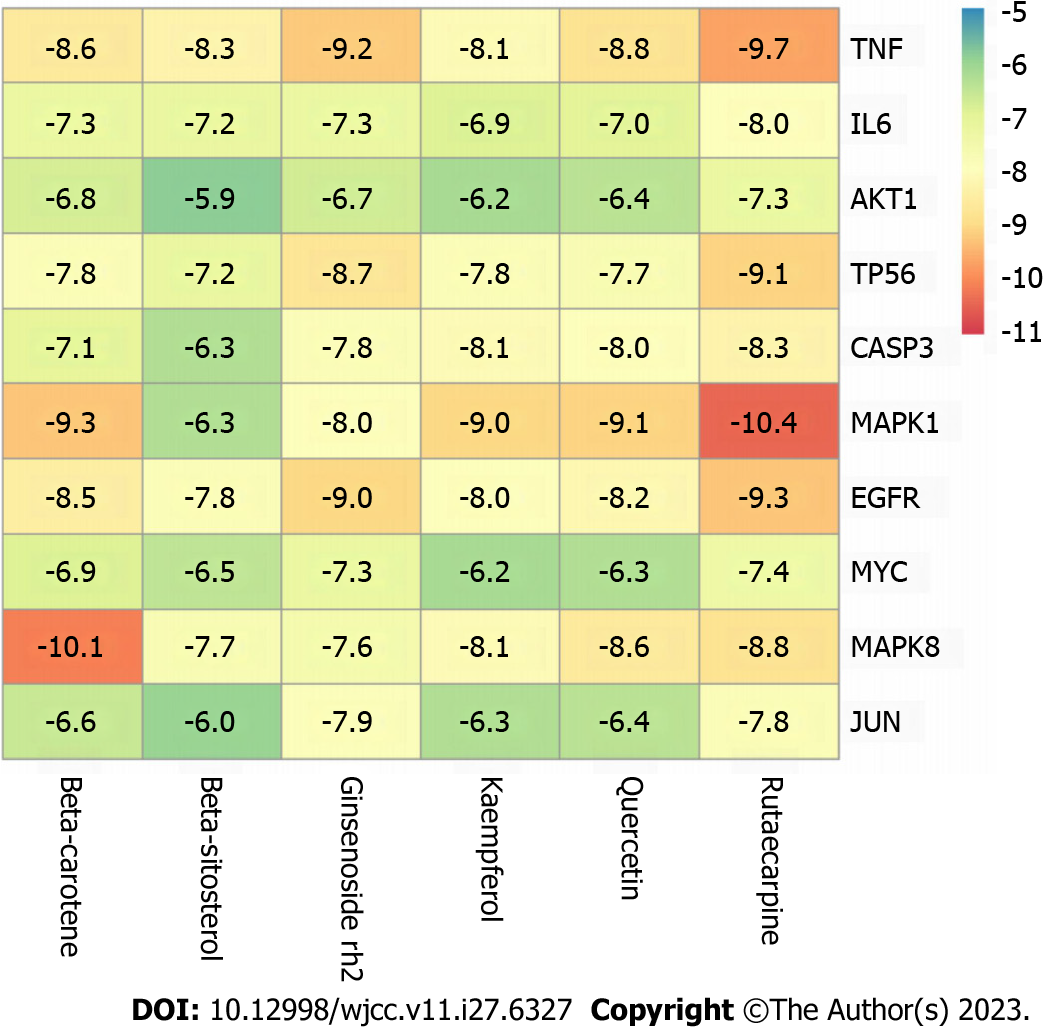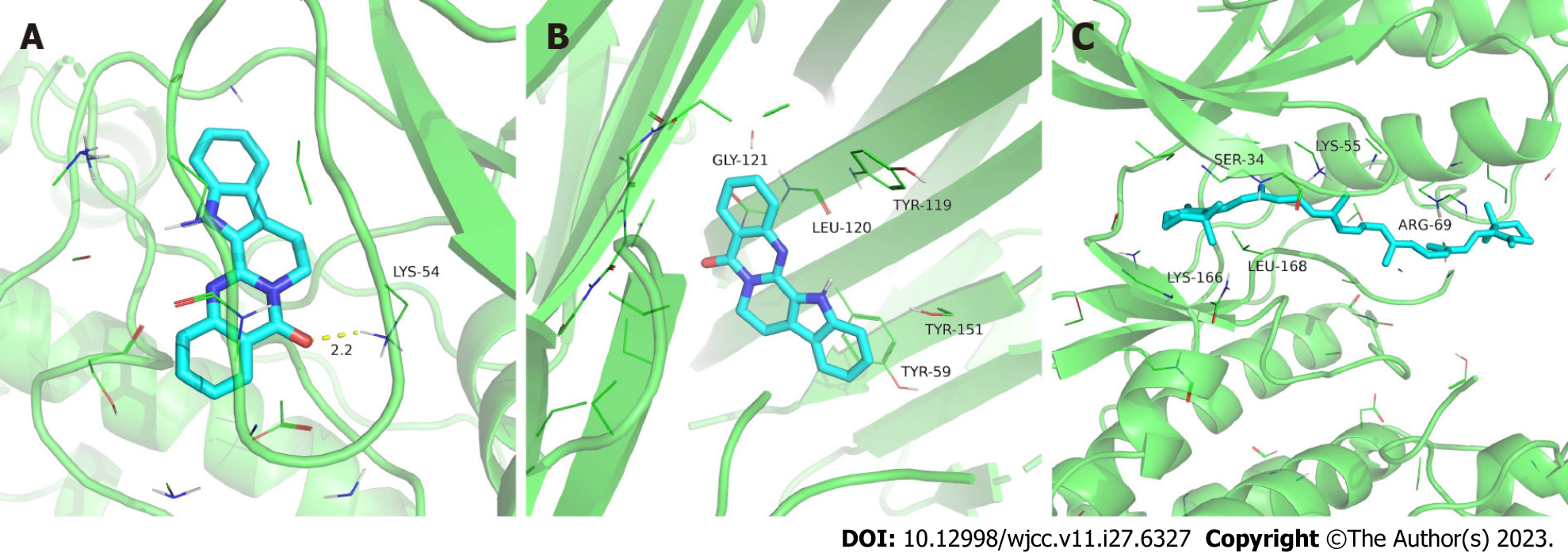Copyright
©The Author(s) 2023.
World J Clin Cases. Sep 26, 2023; 11(27): 6327-6343
Published online Sep 26, 2023. doi: 10.12998/wjcc.v11.i27.6327
Published online Sep 26, 2023. doi: 10.12998/wjcc.v11.i27.6327
Figure 1 Schematic diagram of this work to explore potential mechanisms of Wuzhuyu decoction treating hepatocellular carcinoma.
CTD: Comparative Toxicogenomics Database; GO: Gene Ontology; KEGG: Kyoto Encyclopedia of Genes and Genomes; OMIM: Online Mendelian Inheritance in Man; PPI: Protein-protein interaction; TCMSP: Traditional Chinese Medicine Systems Pharmacology Database and Analysis Platform; TTD: Therapeutic Target Database.
Figure 2 Venn diagram of Wuzhuyu decoction related targets and hepatocellular carcinoma related targets.
HCC: Hepatocellular carcinoma.
Figure 3 “Wuzhuyu decoction-active compounds-target genes” network.
The blue rectangles represent the potential targets. The ellipses represents the components contained in Wuzhuyu decoction. The red represents Dazao, the orange represents Wuzhuyu, the green represents Shengjiang, and the purple represents Renshen.
Figure 4 The protein-protein interaction network from the STRING database was visualized via Cytoscape software.
The lines between two nodes represent the interaction. The darker the color of the node, the more relevant the relationship between them.
Figure 5 Chord diagram showed the top 10 genes corresponding to 12 CytoHubba algorithms.
CASP3: Caspase-3; DMNC: Density of maximum neighborhood component; EGFR: Epidermal growth factor receptor; EPC: Edge Percolated Component; IL6: Interleukin 6; MAPK: Mitogen-activated protein kinase 1; MCC: Maximal Clique Centrality; MNC: Maximum Neighborhood Component; TNF: Tumor necrosis factor.
Figure 6 Top 10 hub genes were confirmed by radiality.
The darker the color of the node, the better the degree. CASP3: Caspase-3; EGFR: Epidermal growth factor receptor; IL6: Interleukin 6; MAPK: Mitogen-activated protein kinase; TNF: Tumor necrosis factor.
Figure 7 Sankey diagram showed the relationship among the target genes, the active components, and traditional Chinese medicines of Wuzhuyu decoction.
The vertical bars on the left represent the different traditional Chinese medicines, the middle bars represent the active components, and the right bars represent the target genes. The size of the bars and the thickness of the lines represent the amount of interactions. CASP3: Caspase-3; EGFR: Epidermal growth factor receptor; IL6: Interleukin 6; MAPK: Mitogen-activated protein kinase; MOL000098: Quercetin; MOL000422: Kaempferol; MOL005344: Ginsenoside Rh2; MOL002662: Rutaecarpine; MOL002773: β-carotene; MOL000358: β-sitosterol; TNF: Tumor necrosis factor.
Figure 8 Diagram of the top 10 Gene Ontology enrichment items (biological process, cellular component, molecular function).
A: Bar diagram of the top 10 Gene Ontology enrichment items; B: Bubble diagram of the top 10 Gene Ontology enrichment items. BP: Biological process; CC: Cellular component; MF: Molecular function; Hsp90: Heat shock protein 90.
Figure 9 Bar diagram of the top 20 Kyoto Encyclopedia of Genes and Genomes enrichment items.
IL6: Interleukin 6; Th17: T helper type 17; TNF: Tumor necrosis factor.
Figure 10 “Target genes-pathways” network.
The blue rectangles represent the potential targets of Wuzhuyu decoction against hepatocellular carcinoma (HCC). The red ellipses represent the top ten hub genes of Wuzhuyu decoction against HCC; the brown triangles represent potential pathways related to HCC. The lines between two nodes represents the interaction. CASP3: Caspase-3; EGFR: Epidermal growth factor receptor; IL6: Interleukin 6; MAPK: Mitogen-activated protein kinase; TNF: Tumor necrosis factor.
Figure 11 Heat map of the docking scores of the key active components and the core target proteins of Wuzhuyu decoction.
CASP3: Caspase-3; EGFR: Epidermal growth factor receptor; IL6: Interleukin 6; MAPK: Mitogen-activated protein kinase; TNF: Tumor necrosis factor.
Figure 12 Molecular docking results.
A: Rutaecarpine to mitogen-activated protein kinase 1; B: Rutaecarpine to tumor necrosis factor; C: β-carotene to mitogen-activated protein kinase 8.
- Citation: Ouyang JY, Lin WJ, Dong JM, Yang Y, Yang HK, Zhou ZL, Wang RQ. Exploring the pharmacological mechanism of Wuzhuyu decoction on hepatocellular carcinoma using network pharmacology. World J Clin Cases 2023; 11(27): 6327-6343
- URL: https://www.wjgnet.com/2307-8960/full/v11/i27/6327.htm
- DOI: https://dx.doi.org/10.12998/wjcc.v11.i27.6327










